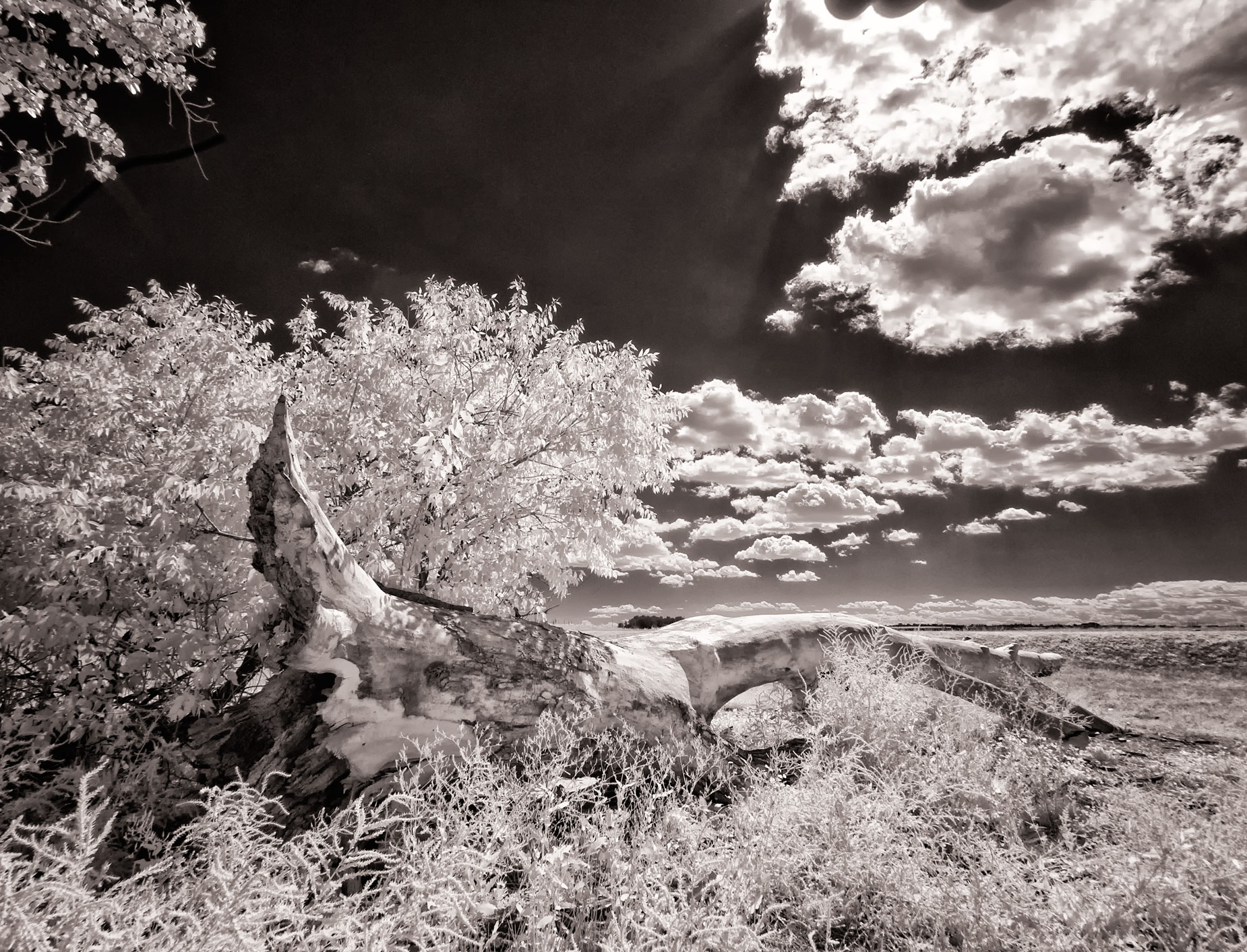Today’s Post by Joe Farace
There are dark shadows on the earth, but its lights are stronger in the contrast. —Charles Dickens
Invisible Infrared Light
A typical digital camera’s sensor sees a range of light in wavelengths ranging from 350 to 1,000 nanometers. (A nanometer (nm) is a metric unit of length equal to one billionth of a meter.) Your eyes typically see a range of light from 400 to 700 nanometers. Most digital cameras have a low pass filter located in front of their sensors allowing light that’s visible to the human eye to pass through to the sensor where it’s captured. This same filter blocks unwanted light from the infrared and ultraviolet spectrums (the high end and the low end wavelengths) from polluting a photograph’s color. As owners of early Leica M8 cameras quickly discovered this piece of glass is important for maintaining maximum color fidelity.

How I Made this photograph: I made this infrared image at one my favorite IR locations—Parker, Colorado’s McCabe Meadows—with an Olympus Pen E-P1 with the M. Zuiko Digital ED MSC 9-18mm f/4.0-5.6 lens (at 18mm, 36mm equivalent.) The exposure was 1/500 sec at f/11 and ISO 400. The RAW file was processed in Silver Efex using its Full Dynamic (harsh) preset, slightly tweaking the sliders. I hit the image with Dfine to knock off any digital noise created by the filter’s Structure slider and then added Platinum toning from PhotoKit2 to give it a woodsy look.
Keep in mind that as I write this: According to the US Customs Clearance website, Last Modified: April 3, 2025: “Personal imports from Japan valued at $800 or less may be entered into the U.S. duty-free.” This is knows as the De Minimis value. However… According to gmgus.com, “The De Minimis rule…. has been revoked for China and Hong Kong.”
Why the above is important: A used Olympus Pen E-P1 body sells for a little more than a hundred bucks. If you stretch your budget, you can get one with a kit lens from Japan via eBay (see above) for just a little more plus shipping. The cost of converting the camera for infrared capture by LifePixel—the company I’m most familiar with, others may have similar costs and options— is $275. This puts a 12.3-megapixel infrared camera in your hands for a little more than $400. Keep in mind that the E-P1 does not have a built-in optical or electronic viewfinder and the LCD screen can be difficult to see on sunny days. Olympus previously offered an optional accessory hot shoe mounted optical viewfinder, the VF-1, that provided a 17mm lens angle-of-view, which is better than nothing. A VF-1 will cost another $50 to $100, which, to me, seems to defeat the whole idea of shooting infrared on a budget.
If your megapixel sensitivity is offended by shooting with just 12.3-megapixels, you’ll have to ante up from $300 to $400 bucks for a Pen E-P5 body that includes the same 16-megapixel sensor as the Olympus OM-D E-M5. BUT, I’ve seen E-M5 bodies for sale for about the same price, so if you want more megapixels, that’s a better deal and the E-M5 has an eye-level 1440k dot EVF built in. PS. I own an E-M5 Mark I and it’s a great camera.
 Life Pixel does a great job with IR conversions and they have done all the conversions for my Canon DSLRs as well as Panasonic Lumix G-series cameras. This is not a paid or sponsored endorsement, just my experience.
Life Pixel does a great job with IR conversions and they have done all the conversions for my Canon DSLRs as well as Panasonic Lumix G-series cameras. This is not a paid or sponsored endorsement, just my experience.
Used copies of my book, The Complete Guide to Digital Infrared Photography are available used from Amazon for $31.18 as I write this. My book Creative Digital Monochrome Effects has a chapter on IR photography and is available new from Amazon for $19. with used copies starting around seven bucks